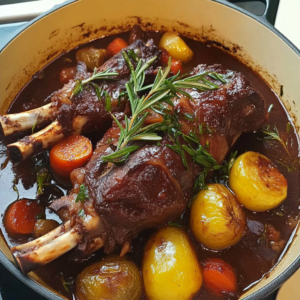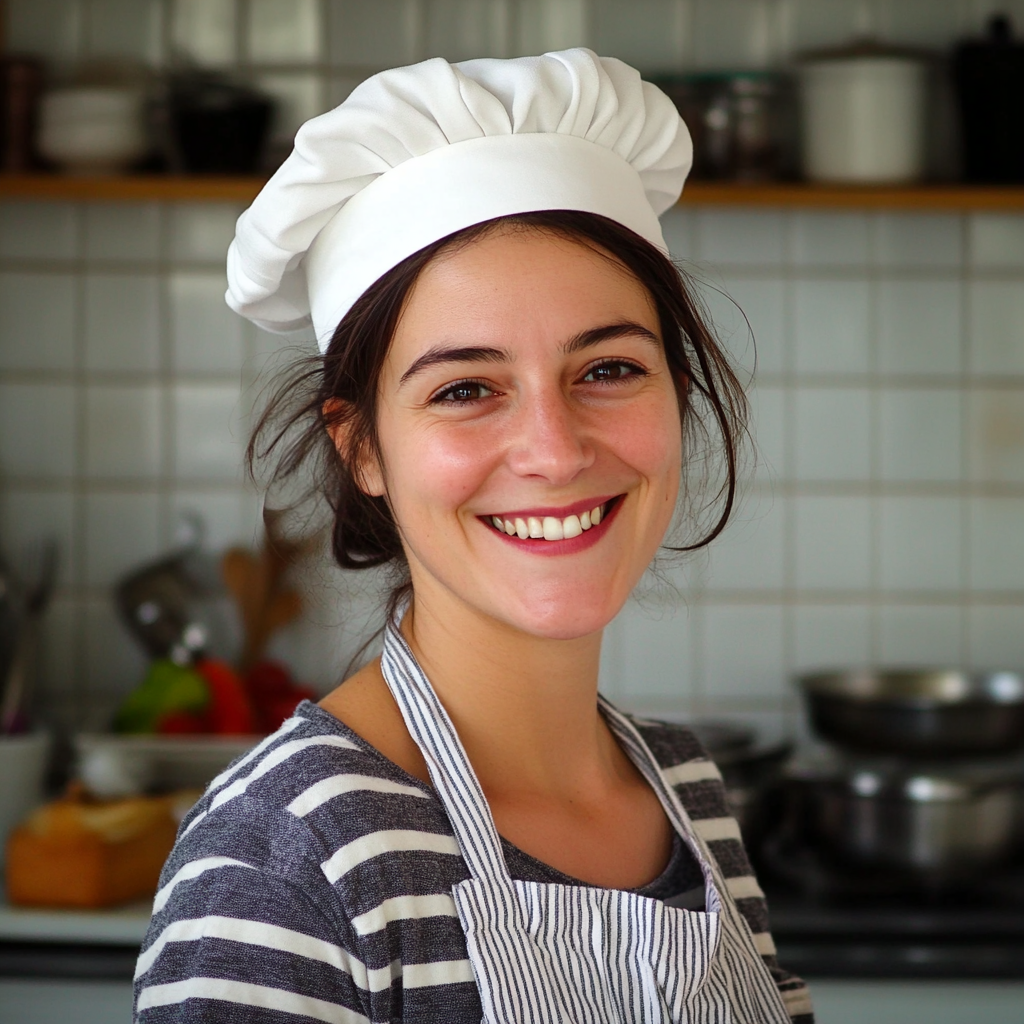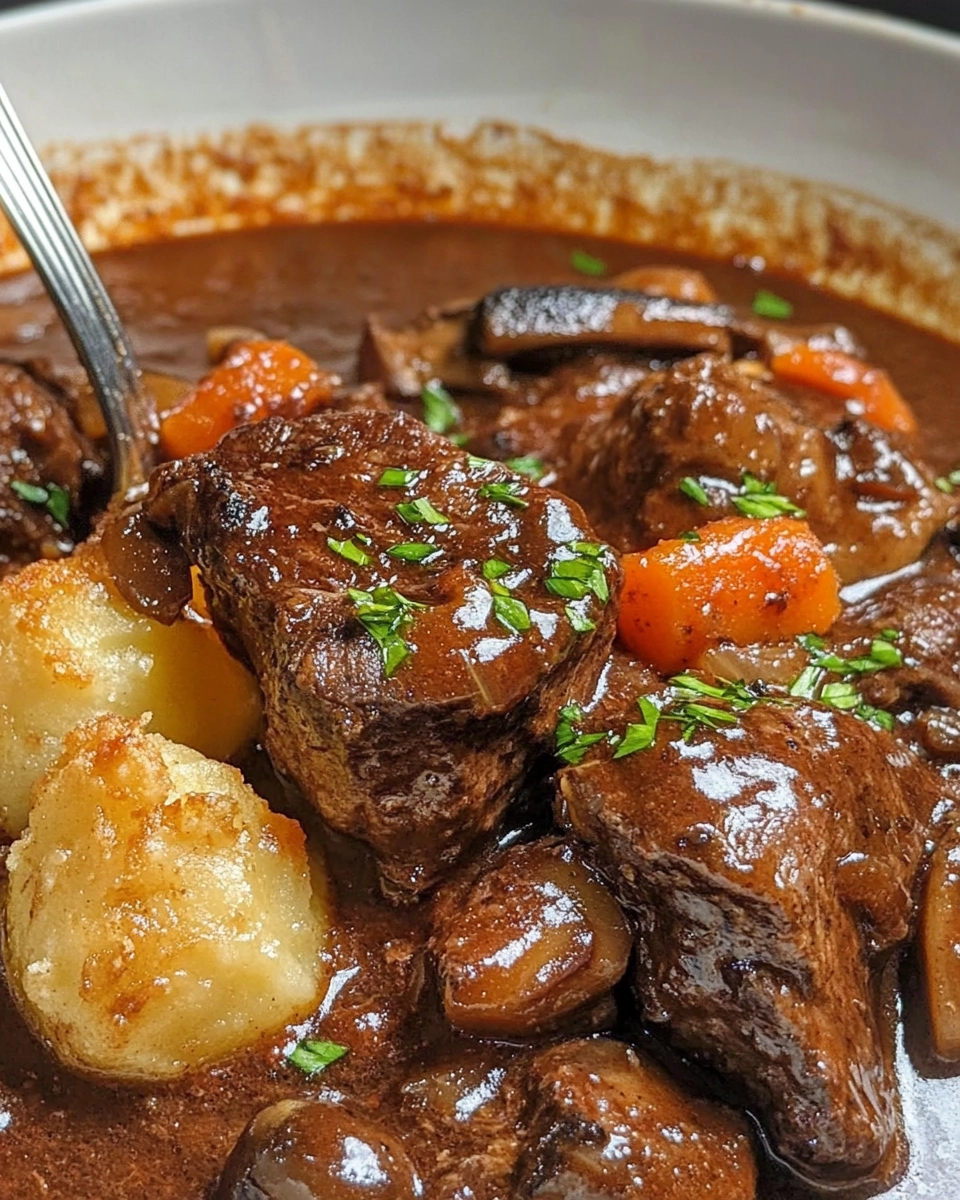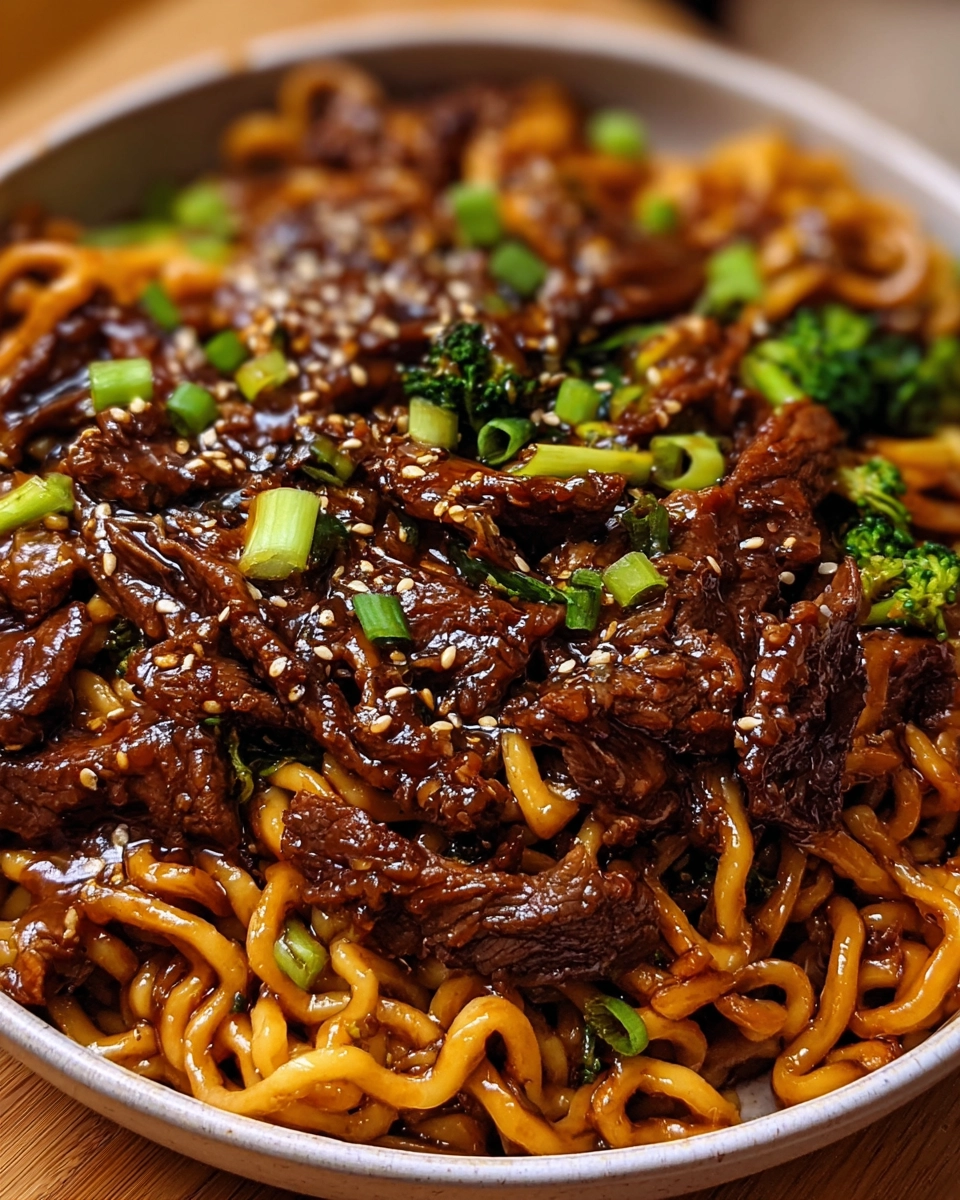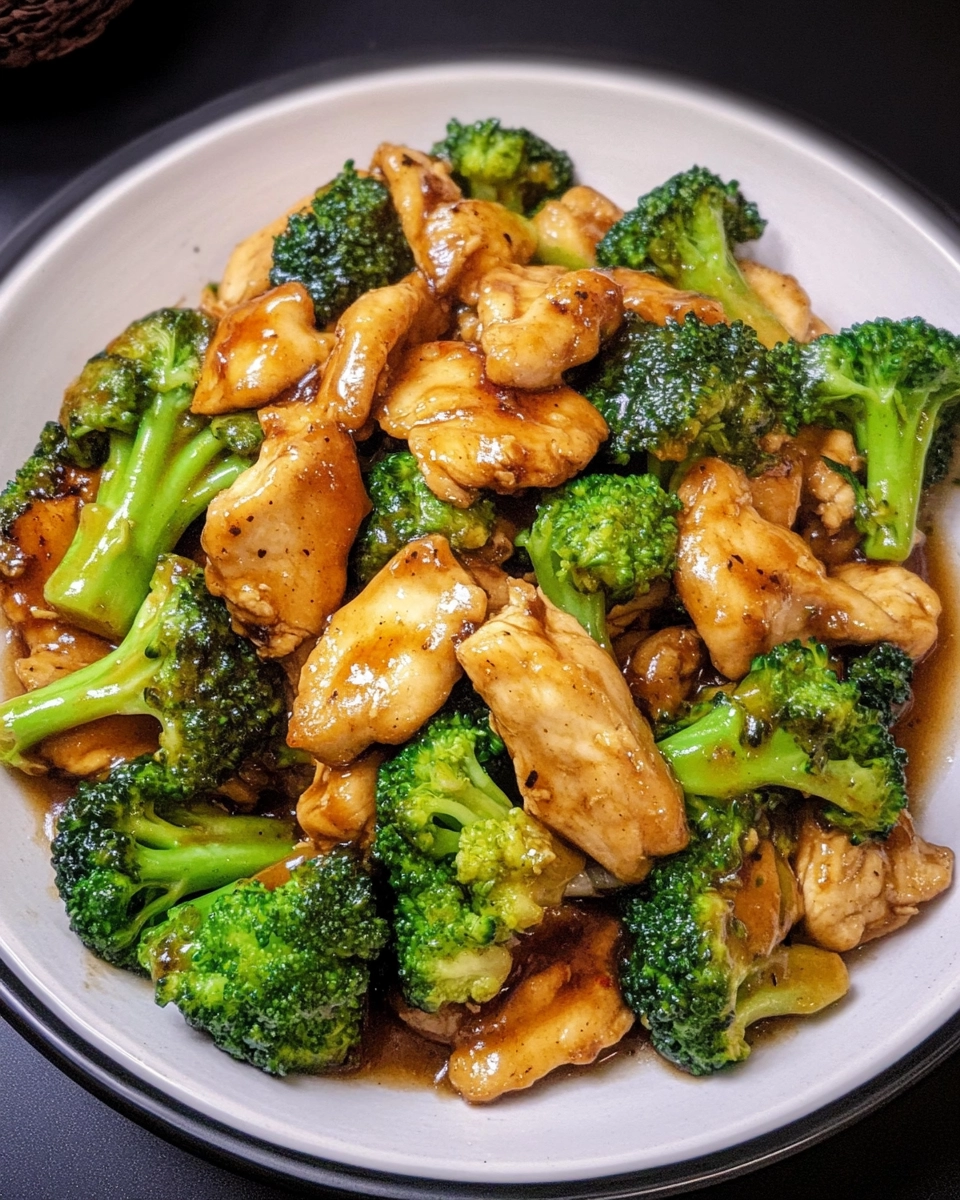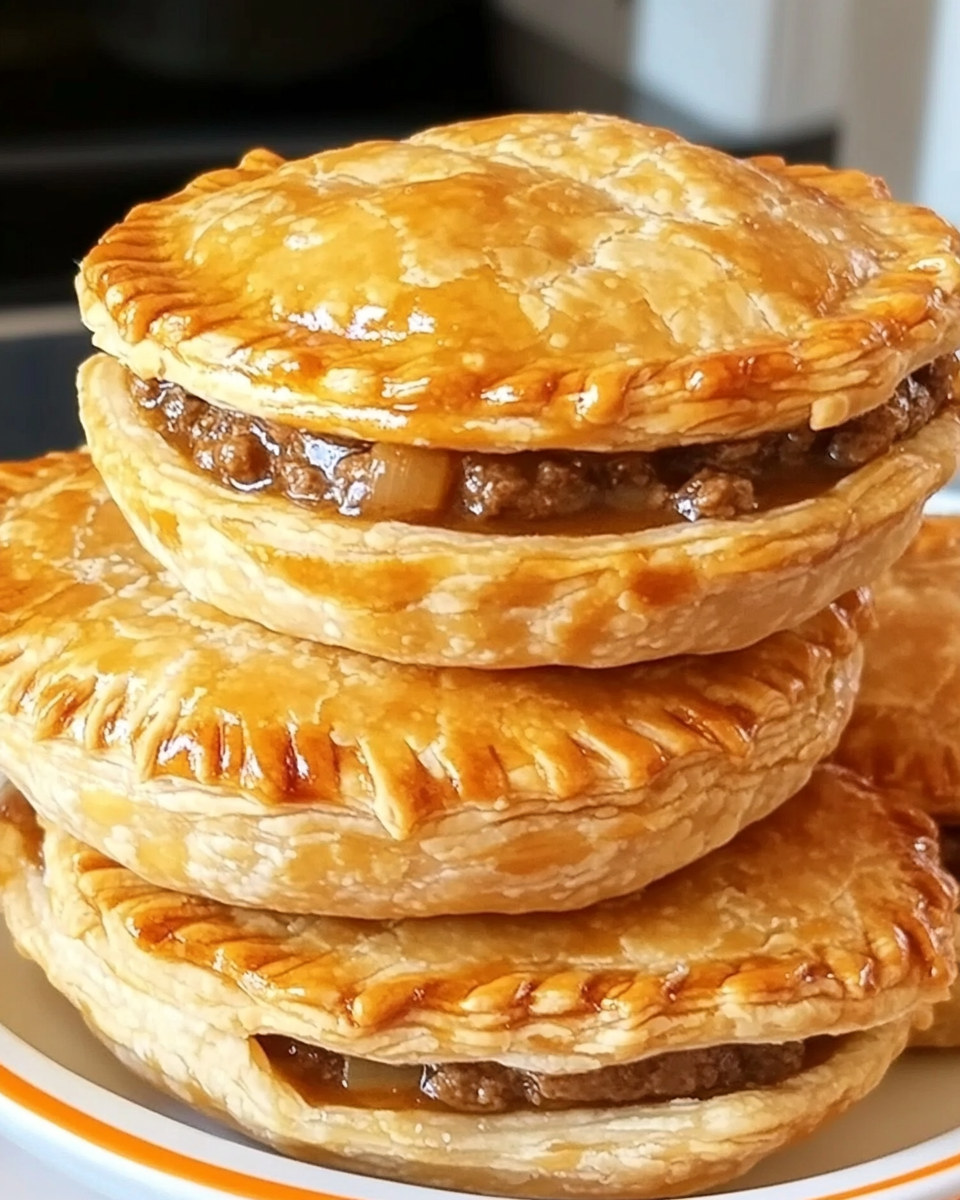Hi there!
My name’s Maggie Rae Donovan, and I’m a 42-year-old home cook living just outside of Asheville, North Carolina. I’m not a classically trained chef. I never went to culinary school, and you won’t catch me quoting the greats from glossy cookbooks. But I’ve spent the last 25 years stirring, sizzling, baking, burning (yes, sometimes), and falling madly in love with food in my own little kitchen.
My cooking journey started like most Southern stories do, in my grandmother’s kitchen, where butter was measured with your heart and stories were passed down with every pot of collard greens. I remember being six years old, standing on a chair, watching her fold biscuit dough like it was some kind of magic trick. It stuck with me. Not just the biscuits, but the comfort, the warmth, the way food made people sit down and stay awhile.
Life took its turns. I became a nurse, raised two beautiful daughters, and moved more times than I can count. But one thing remained steady. I always cooked. When money was tight, I got creative. When we were celebrating, I went all out. I found joy in the daily act of feeding people, whether it was a pot of chili on a rainy Sunday or a full Thanksgiving spread with every dish made from scratch.
Some of my best recipes came out of “oops” moments. Adding too much lemon to a cream sauce turned into a bright new favorite. Forgetting to buy breadcrumbs once led me to crush up pretzels instead. My family still asks for “the crunchy chicken.” That’s the magic of home cooking. It’s forgiving. It invites play. It reminds us that perfection is never the point. Connection is.
Now, I spend a lot of time sharing what I’ve learned, on my blog, at local potlucks, and sometimes just by slipping a warm loaf of banana bread onto a neighbor’s porch. I love teaching other home cooks that you don’t need fancy tools or expensive ingredients to make something beautiful. What matters most is showing up, with a little time, a little heart, and maybe a little butter.
If you’re ever in my neck of the woods, don’t be surprised if you smell something simmering. The door’s always open, and I’ll probably ask you to taste-test whatever’s on the stove.
Because to me, cooking isn’t just about food. It’s about home.
Check out other rustic meal inspirations

Table of Contents
The Comfort of Braised Lamb Shanks at Home
The Southern kitchen that shaped my love for comfort cooking
Let me tell you, there’s something about the way a lamb shank melts in your mouth after hours of slow cooking that transports me right back to my grandmother’s table. It’s not just about the flavor, though that deep, savory richness of red wine‑braised lamb shanks with rosemary & root vegetables is something dreams are made of. It’s about the ritual. The smells that fill the house. The sense that time has slowed down, just long enough to gather everyone around the table.
Cooking lamb shanks wasn’t always part of my Southern roots, but it sure fits like it should’ve been. When I first stumbled across a recipe for red wine‑braised lamb, I was just trying to impress a date. What happened instead was that I fell headfirst in love—with the dish.
Why braised lamb shanks became my go-to for special occasions
This is the kind of meal you make when your people need comfort. When there’s been a long week. When it’s cold out and you want to warm up from the inside. The tenderness of the meat, the bold yet balanced flavor from a good red wine, and the earthiness of rosemary tucked into root vegetables—well, it’s enough to make anyone slow down and stay awhile.
You don’t have to be a professional chef to nail this. That’s the best part. Whether it’s your first time braising or your fiftieth, lamb shanks are surprisingly forgiving. The longer they cook, the better they get. You just need a bit of time, a solid Dutch oven, and the kind of wine you’d pour for a friend.
Discover great ideas like this warming Tuscan beef casserole
Looking for inspiration? Try this comforting lamb shank variation
Understanding Lamb Shanks and Braising Basics
What are lamb shanks and why are they ideal for slow cooking?
Lamb shanks come from the lower part of the animal’s leg, either the fore or hind shank. They’re naturally tough due to all the connective tissue and muscle, which is exactly why they’re perfect for braising. Unlike prime cuts that can dry out quickly, lamb shanks thrive in low-and-slow cooking conditions.
When you slow-cook lamb shanks, that tough collagen breaks down and transforms into gelatin, giving the dish its signature melt-in-your-mouth tenderness. The bone also adds depth, releasing marrow and richness into your braising liquid. It’s a cut that rewards patience with bold, comforting flavors.
If you’ve ever wondered why restaurant lamb is so buttery and rich, chances are they’ve let it braise for hours. And you can do the same at home.
I remember the first time I cooked lamb shanks on a Sunday. I had no idea what I was doing, but the smell that crept out of my oven made the whole neighborhood jealous. I opened every window just to tease them a little.
What is braising? The timeless cooking method for tender meat
Braising is one of those old-world cooking techniques that never goes out of style. You first sear the meat to lock in flavor and create a beautiful crust, then cook it slowly in liquid—usually a mix of broth, wine, or both. The result? Meat that’s fork-tender and swimming in a sauce you’ll want to mop up with crusty bread.
It’s a one-pot wonder, really. And it works magic on cuts like lamb shanks, pork shoulder, short ribs, and chicken thighs. The key to a successful braise is layering flavors at every stage—from searing and sautéing the aromatics to choosing the right liquid and cooking it low and slow.
When you’re braising lamb shanks in red wine with rosemary and root vegetables, everything works together. The red wine adds acidity and depth. Rosemary lends a piney freshness. The root vegetables soak up all that liquid, becoming soft and flavorful companions to the meat.
If you’ve never braised before, don’t worry. You’re basically letting the oven do the work. Just give it time, and let the flavors get cozy.
Don’t miss our easy guide to making tender garlic chicken ramen
Check out another comforting slow-cooked meal idea
Choosing the Best Red Wine for Braising Lamb
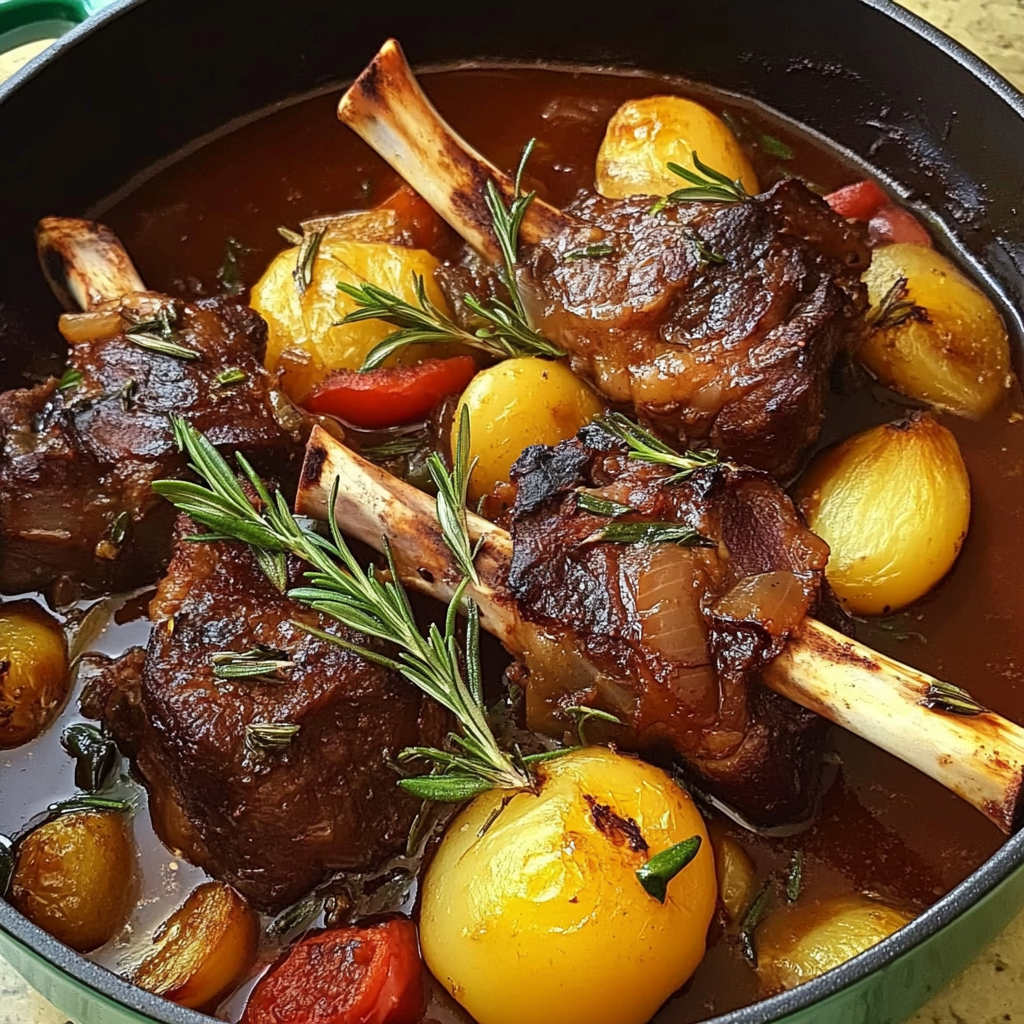
What red wines work best with lamb shanks?
When it comes to braising lamb shanks, not all red wines are created equal. You want a wine that complements the deep, gamey richness of the lamb without overpowering it. Think bold, dry, and tannin-rich.
The best red wines for braised lamb shanks are:
- Cabernet Sauvignon – It’s bold, tannic, and offers notes of blackberry, spice, and oak that play beautifully with rosemary and garlic.
- Syrah/Shiraz – Peppery, earthy, and rich, Syrah adds warmth and complexity. It’s especially great if your recipe leans into savory root vegetables.
- Zinfandel – Fruity with a kick of spice, Zinfandel brings a bit of brightness that balances the meat’s intensity.
- Merlot – Smoother and slightly softer than Cabernet, Merlot can still hold its own in a slow braise. It works well if you prefer a more mellow sauce.
- Chianti or Rioja – These dry European wines bring a rustic, acidic backbone that cuts through the richness of the lamb.
The key? Use something drinkable. If you wouldn’t sip it from a glass, don’t pour it into your pot. I learned this the hard way once when I used a dusty bottle of “cooking wine” and ended up with a dish that tasted like vinegar and regret.
Why the wine’s body and flavor matter
The wine doesn’t just sit in the pot. It transforms. As it reduces during cooking, its flavors concentrate and infuse every fiber of the meat and every cube of carrot or potato. The more structured the wine, the more depth your sauce will have.
A fuller-bodied red wine brings out the lamb’s richness. The tannins soften with heat, and the fruit and spice round out into something savory and satisfying. Lighter wines can work, but they might not hold up to the strong flavors in this dish.
Also, keep an eye on sweetness. A dry wine will keep the braise from turning syrupy or cloying. If you’re adding tomatoes or sweet root vegetables like carrots or parsnips, balance becomes even more important.
I once braised with a red blend that was a little too sweet and the end result was oddly jammy. Not bad, just not what I was going for. Lesson learned: always taste first.
Want to skip the guesswork? My personal go-to is a California Cabernet or a Côtes du Rhône. Both are affordable and full of the flavor this dish craves.
Learn more about balancing flavors with wine in comfort dishes
Discover a sweet-savory combo with cheese and onion mini baguettes
Selecting and Prepping Root Vegetables for Depth
Best root vegetables to pair with lamb (and why they work)
Root vegetables aren’t just filler in a braise—they’re the soul of the sauce. They soak up the wine, broth, and herbs, softening into little bursts of flavor that round out the richness of lamb shanks. They also add balance, natural sweetness, and texture.
Here are my go-to vegetables for this dish and why they shine:
- Carrots: Sweet and earthy, they mellow out the wine and provide a nice pop of color.
- Parsnips: A little sweeter and more complex than carrots, they pair beautifully with rosemary and garlic.
- Turnips: Slightly bitter, turnips help cut through the fatty richness of the lamb.
- Celery Root (Celeriac): Mild and nutty, it gives the braise a delicate herbal note.
- Potatoes: Waxy types like Yukon Gold hold their shape and soak up sauce like a sponge.
- Sweet Potatoes: If you want a hint of sweet-and-savory contrast, these are excellent—just go easy on them or they’ll overpower the dish.
- Onions and Shallots: These technically aren’t roots but they belong in the pot. They caramelize beautifully and act as a savory backbone to the entire dish.
You can mix and match depending on what you have on hand. I usually go with carrots, parsnips, and a few potatoes. Sometimes I toss in a handful of peeled pearl onions if I’m feeling fancy.
Back when I was feeding a hungry group of teenagers on a tight budget, I learned that even the humblest root vegetables, when treated with care, can feel downright luxurious. A well-braised carrot in a wine sauce tastes like magic.
Properly chopping and prepping for balanced cooking
Cutting your root vegetables evenly ensures they cook at the same rate. Uneven chunks will leave you with some veggies mushy and others undercooked. Aim for 1.5 to 2-inch pieces—big enough to hold their shape but small enough to soak up flavor.
Here are a few prep tips:
- Peel everything: Root vegetables often have tough skins that won’t soften during braising.
- Soak cut potatoes in water: This pulls out some of the starch, helping them stay firm in the braise.
- Brown root veg separately: For deeper flavor, sear the veggies in the pan after browning the lamb. It caramelizes their sugars and builds a richer base for your sauce.
Don’t overcrowd the pot. Everything needs a bit of space to braise properly. If your Dutch oven isn’t large enough, it’s okay to cook in batches or reduce the quantity.
And trust me, when you lift that lid and see those vegetables all golden and bathed in wine, it’ll be hard not to sneak a bite before serving.
Looking for a flaky dish to pair? Try this savory puff pastry breakfast bite
Seasoning and Aromatics — Where Rosemary Shines

How rosemary elevates the dish’s earthy flavors
Rosemary is the herb that gives red wine‑braised lamb shanks their identity. It’s bold and woodsy with just enough bitterness to cut through the richness of the meat. When you simmer rosemary low and slow with lamb and root vegetables, it releases its oils gradually, infusing the entire dish with piney, herbal depth.
For this recipe, fresh rosemary is the way to go. Dried rosemary can sometimes be too brittle and harsh unless it’s finely crushed. One or two sprigs are enough to perfume the entire pot. Toss them in whole, and let them work their magic as the lamb cooks down into fork-tender perfection.
I like to bruise the rosemary a bit between my fingers before adding it—just to coax those fragrant oils out early. Sometimes I tie it up with twine along with bay leaves and thyme into a little bouquet garni, so I can easily remove it after the dish is done.
Back in my early cooking days, I went overboard with rosemary and ruined a perfectly good stew. It ended up tasting like pine cleaner. That’s when I learned that rosemary, like salt, is best added thoughtfully.
Other aromatics to enhance the braise (garlic, thyme, bay)
While rosemary is the star, it doesn’t stand alone. A good braise needs a cast of aromatic players to round out the flavor:
- Garlic: Use whole cloves or thick slices. They’ll soften and mellow as they cook, adding sweetness and complexity.
- Thyme: Slightly lemony and floral, thyme supports rosemary without overpowering it. Toss in 3–4 sprigs or 1 teaspoon dried.
- Bay Leaves: These add an earthy, herbal undercurrent. Use one or two whole leaves. Remove them before serving.
- Onions/Shallots: Start your braise with caramelized onions or shallots for a sweet and savory foundation.
- Crushed red pepper (optional): Just a pinch can add a subtle kick that enhances the warmth of the dish.
If you want to deepen the flavor even more, a spoonful of tomato paste sautéed with the aromatics adds umami and richness to your wine sauce.
This is where the braise becomes more than just meat and liquid—it becomes a layered, flavorful stew that feels both rustic and refined. It smells like something you’d find in an old French farmhouse, even if you’re just in your pajamas in North Carolina.
Discover more one-pot comfort in this creamy chicken stroganoff
Step-by-Step Cooking Method for Fall-Off-The-Bone Perfection
Preparing the lamb: trimming, searing, and layering flavor
Before the braise begins, you need to build a solid foundation—and that starts with the lamb shanks themselves. Here’s how to get them ready:
1. Trim excess fat: Lamb shanks can have thick layers of fat and silverskin. You want to remove most of it with a sharp knife, but don’t strip them bare—some fat adds flavor during cooking.
2. Pat dry: Always pat your lamb shanks dry with paper towels. A dry surface means better browning when they hit the pan.
3. Season generously: Rub with kosher salt, cracked black pepper, and a light dusting of flour. The flour helps with browning and will slightly thicken the sauce later on.
4. Sear the shanks: In a large Dutch oven, heat a splash of olive oil over medium-high. Sear the lamb on all sides until deep golden brown—about 3–4 minutes per side. Don’t rush this step. Good browning means good flavor. Set the shanks aside.
5. Sauté aromatics: In the same pot, lower the heat. Add diced onions, garlic, and a touch of tomato paste. Scrape up the browned bits with a wooden spoon—those caramelized bits are liquid gold.
6. Deglaze with red wine: Pour in 1 to 2 cups of dry red wine and let it simmer for a couple of minutes to burn off the alcohol and concentrate the flavor.
Learn more about how deglazing adds richness to comfort dishes
Simmering to tenderness: how long to braise lamb shanks
This is where the magic happens. Once everything’s in the pot, your only job is to wait while the lamb transforms.
Here’s how to finish the braise:
- Add root vegetables: Toss in your prepped carrots, parsnips, and potatoes, along with fresh rosemary, thyme, and a bay leaf or two.
- Add broth: Pour in enough beef or chicken broth to just cover the shanks. The combination of broth and wine should submerge about ¾ of the meat.
- Return shanks to the pot: Nestle them in snugly over the vegetables.
- Cover and braise: Put the lid on and transfer the Dutch oven to a preheated oven at 325°F (163°C). Let it braise for 2.5 to 3 hours, or until the meat is fall-off-the-bone tender.
- Check occasionally: Around the 2-hour mark, gently poke a shank with a fork. If it slips in with no resistance, you’re there. If not, give it more time.
- Finish uncovered (optional): For a thicker sauce, remove the lid during the last 30 minutes. This helps reduce the liquid and concentrate the flavors.
When it’s done, your lamb will be spoon-tender, the sauce silky, and the vegetables perfectly caramelized around the edges.
And if you’re like me, you’ll sneak a bite straight from the pot while pretending you’re just “checking the seasoning.”
Looking for another family-favorite slow bake? Try this chicken-spinach oven dish
Serving Suggestions and Pairings
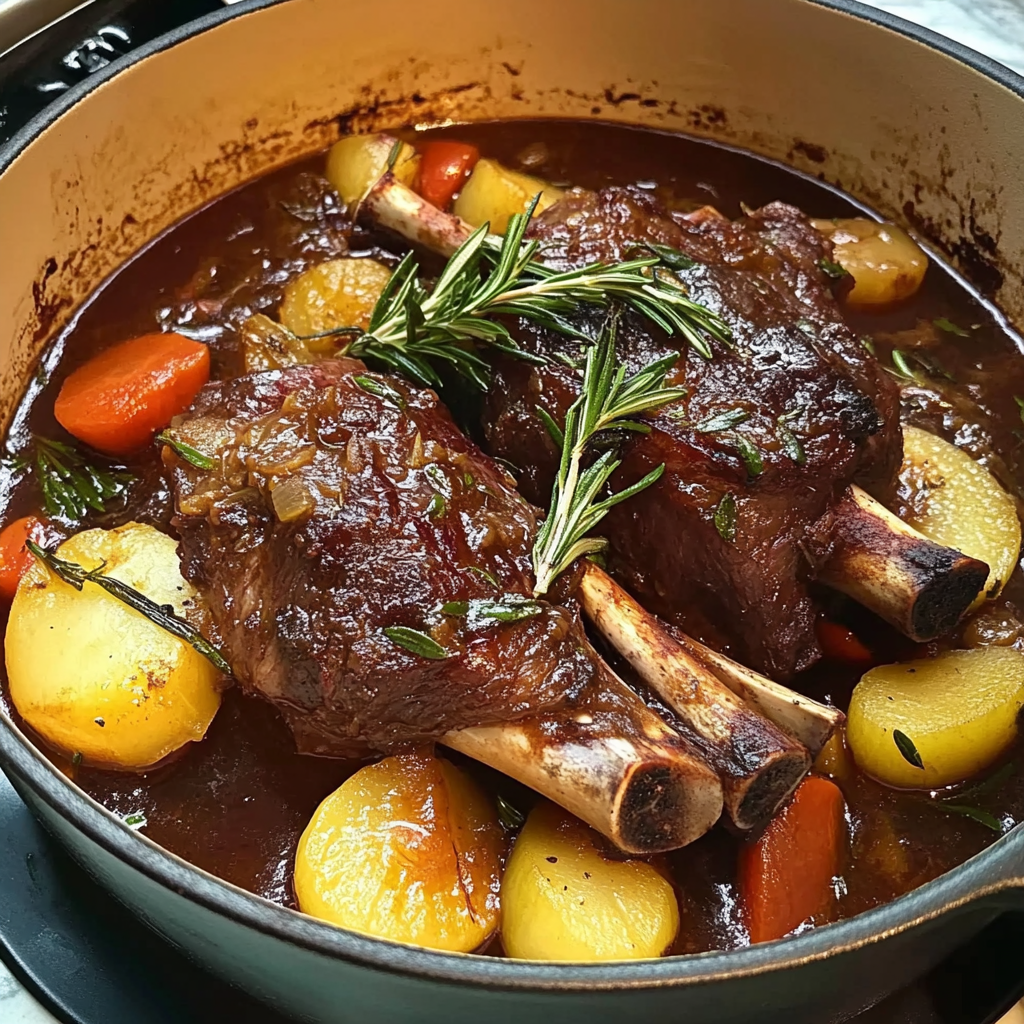
How to plate braised lamb shanks for dinner guests
When you’ve spent hours coaxing flavor out of lamb, wine, and root vegetables, it deserves a thoughtful presentation—one that highlights your work without overcomplicating it. Braised lamb shanks are rustic by nature, but with a little intention, they can look downright elegant on the plate.
Start with a wide, shallow bowl or a rimmed dinner plate. Scoop a generous bed of root vegetables and sauce into the bottom, letting the rich gravy create a luscious base. Gently place the lamb shank on top, bone up for drama. Spoon over more sauce for that glossy, mouthwatering finish.
Want a pop of color? Garnish with freshly chopped parsley or rosemary leaves. A slice of lemon zest can also lift the dish and cut the richness ever so slightly.
For casual nights, I skip the plating and serve it straight from the Dutch oven in the center of the table, letting everyone dig in family-style. There’s something cozy and honest about it. You can hear the “oohs” before the first bite.
Discover more warm family-style meals
What to serve with lamb shanks (wine, sides, bread)
The richness of red wine‑braised lamb shanks with rosemary & root vegetables calls for sides that balance and support, not compete. Here are my favorite pairings:
Wine
- Cabernet Sauvignon or Syrah: If that’s what you cooked with, pour a glass! Their structure holds up beautifully to the lamb.
- Malbec or Merlot: Rounder, fruitier wines offer a softer contrast to the bold flavors in the sauce.
- Dry red blends: Affordable and flavorful, perfect for guests who aren’t wine-savvy.
Sides
- Creamy polenta: A buttery polenta base soaks up the braising sauce like nothing else.
- Mashed potatoes: For the ultimate comfort pairing, serve with garlicky mash.
- Buttery egg noodles: These catch every drop of the sauce.
- Steamed green beans or sautéed kale: A simple veggie balances out the richness.
- Crusty bread: To mop up the last of the wine gravy (and trust me, there will be competition for it).
On Sundays, I’ll sometimes serve lamb shanks with cheesy grits—because I’m Southern and I can’t help myself.
This is the kind of meal that makes people slow down, sit longer, and ask for seconds. It’s as much about the experience as the flavor.
Learn more about building savory comfort with flaky side bites
Storing, Freezing, and Reheating Braised Lamb Shanks
How to properly store leftovers for max flavor
One of the best things about making red wine–braised lamb shanks with rosemary & root vegetables is that the leftovers taste even better the next day. The flavors deepen overnight, especially in the sauce, as everything continues to meld in the fridge.
To store properly:
- Cool completely: Let the dish cool down to room temperature before packing it up.
- Use airtight containers: Store lamb and vegetables in shallow, wide containers to preserve texture and prevent sogginess.
- Keep the meat and sauce together: Don’t separate the shanks from the gravy. The liquid keeps the meat moist.
- Fridge life: Keeps well in the fridge for up to 4 days.
- Freeze for later: If you’re planning ahead, braised lamb shanks freeze beautifully. Wrap individual shanks tightly in foil or plastic wrap, then place in a freezer-safe container with some sauce.
When my girls were younger, I’d freeze leftovers into small portions for after-school dinners. I’d just reheat a shank, toast up some bread, and dinner was done faster than takeout.
Check out how to prep ahead with other comfort meals like this rich lamb shank dish
Reheating tips without drying out the lamb
Reheating lamb shanks needs a little care—you want to bring them back to life, not dry them out. Here’s how to do it right:
For refrigerated leftovers:
- Oven method (best): Place the shanks in an oven-safe dish. Add a splash of broth or water to keep things moist. Cover tightly with foil and reheat at 300°F for about 20–30 minutes until warmed through.
- Stovetop method: Put the shanks and sauce in a Dutch oven over medium-low heat. Cover and gently simmer, stirring occasionally, until hot.
For frozen shanks:
- Thaw overnight in the fridge for best texture. Then reheat using either oven or stovetop.
- Avoid microwaving frozen lamb—it often results in rubbery meat and uneven heating.
Quick tip: If your sauce thickens too much after refrigeration, loosen it with a splash of warm broth or wine during reheating. The flavors will spring back to life.
I often keep an extra portion tucked away in the freezer for a rainy-day dinner. When the skies open up and I don’t feel like cooking, nothing beats a hot plate of braised lamb with a hunk of crusty bread.
Troubleshooting and Home Cook Tips
What to do if your shanks are tough after cooking
So, you’ve followed the steps, but your lamb shanks still aren’t fall-off-the-bone tender? Don’t panic. It happens. Braising is more art than science, and sometimes meat just needs a little more time. Here’s what to do:
- Check your time and temperature: If your lamb isn’t tender after 2.5–3 hours, it probably needs more time. Return the pot to the oven and give it another 30–45 minutes. Keep it covered to retain moisture.
- Add liquid if needed: If your sauce has reduced too much, add ½ cup of broth or water to loosen it up and prevent drying.
- Lower the oven temperature slightly: A slow cook at 300°F for longer may help tough cuts break down more gently than a faster cook at 350°F.
- Don’t boil—braise: Make sure your liquid never boils vigorously. Gentle simmering is what breaks down the collagen into tender goodness.
Years ago, I once served lamb that needed a steak knife. Lesson learned. Now I check tenderness by twisting the bone gently with tongs—if it moves easily, you’re golden.
Substitutions and creative swaps when you’re missing ingredients
Not everyone has a stocked pantry, and I’m the first to say that great meals often come from making do with what you’ve got. If you’re missing an ingredient, try one of these smart swaps:
| Missing Ingredient | Try This Instead |
|---|---|
| Red wine | Beef broth + splash of balsamic or grape juice |
| Fresh rosemary | ½ teaspoon dried rosemary or fresh thyme |
| Lamb shanks | Beef short ribs or pork shoulder (cut into chunks) |
| Carrots | Sweet potatoes or butternut squash |
| Tomato paste | A spoonful of ketchup or sun-dried tomato spread |
| Beef broth | Chicken broth + soy sauce (for umami boost) |
Even once, I made this recipe using cranberry juice and soy sauce in place of wine and broth. It was different—but shockingly delicious.
Home cooking is about flexibility. It’s where creativity lives. Just trust your instincts, taste as you go, and don’t be afraid to play with flavors.
If something goes sideways, call it rustic. That’s what I do.
Looking for more resourceful kitchen swaps? Learn from this creative quiche recipe
🏁 Conclusion
Cooking tender red wine–braised lamb shanks with rosemary & root vegetables isn’t just about the food—it’s about the experience. From the way the aroma fills your kitchen to that first satisfying forkful of fall-off-the-bone meat, this dish turns an ordinary evening into something memorable.
It’s forgiving, flexible, and full of soul—the kind of meal that invites connection, comfort, and second helpings. Whether you’re cooking for family, guests, or just yourself on a cozy Sunday, let the wine simmer, the rosemary infuse, and the love you stir into every bite shine through.
Don’t miss our guide to more feel-good comfort meals
📌 Frequently Asked Questions (FAQ)
What is the best braising liquid for lamb shanks?
The best braising liquid for lamb shanks combines dry red wine and beef broth. The wine brings acidity and richness, while the broth adds depth and umami. You can also enhance the base with tomato paste, garlic, and herbs for added flavor.
What is the best cooking method for shanks?
Braising is hands-down the best way to cook lamb shanks. This slow, moist-heat method transforms tough cuts into fork-tender, flavorful meat by breaking down collagen over a few hours.
How to make lamb shanks fall off the bone?
To make lamb shanks fall off the bone, sear them first, then braise low and slow for 2.5–3 hours in a tightly covered Dutch oven. Be sure to use enough liquid, and don’t rush the process—patience creates tenderness.
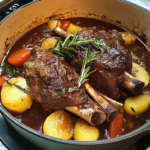
Tender Red Wine‑Braised Lamb Shanks with Rosemary & Root Vegetables
- Total Time: 3 hrs 25 mins
- Yield: Serves 4
Description
Tender Red Wine‑Braised Lamb Shanks with rosemary and root veggies – the ultimate cozy dinner idea. Fall-off-the-bone tender!
Ingredients
4 lamb shanks (about 1 lb each), trimmed
Kosher salt & black pepper
2 tbsp all-purpose flour
2 tbsp olive oil
1 large onion, sliced
6 garlic cloves, smashed
2 tbsp tomato paste
2 cups dry red wine (Cabernet or Syrah)
3 cups beef broth
3–4 carrots, cut into chunks
2 parsnips, peeled and chopped
2 potatoes, cubed
2 sprigs fresh rosemary
3 sprigs fresh thyme
2 bay leaves
Optional: 1 tbsp balsamic vinegar (for brightness at the end)
Instructions
Preheat oven to 325°F (163°C).
Season lamb shanks with salt and pepper. Dust lightly with flour.
Heat oil in a Dutch oven. Brown lamb on all sides (3–4 minutes per side). Remove and set aside.
In the same pot, add onions, garlic, and tomato paste. Sauté until softened and golden.
Pour in red wine. Scrape up browned bits and simmer for 3 minutes.
Return lamb to pot. Add carrots, parsnips, potatoes, rosemary, thyme, and bay leaves. Pour in broth to nearly cover.
Cover tightly and braise in oven for 2.5 to 3 hours until lamb is fork-tender.
Remove rosemary, thyme, and bay. Optionally stir in balsamic. Adjust seasoning to taste.
Serve hot over polenta, mashed potatoes, or with crusty bread.
Notes
Wine matters: Use a wine you enjoy drinking.
- Prep Time: 25 minutes
- Cook Time: 3 hrs
- Category: Dinner / Oven Bake
- Method: Braising
- Cuisine: Rustic, Mediterranean, Southern
Nutrition
- Calories: 615 kcal
